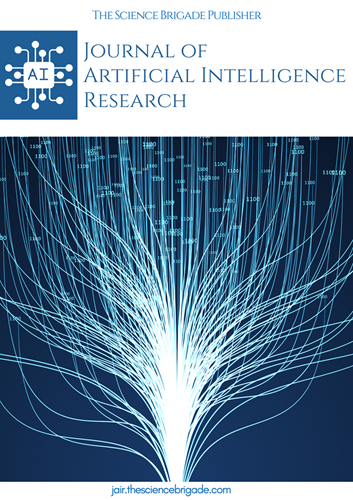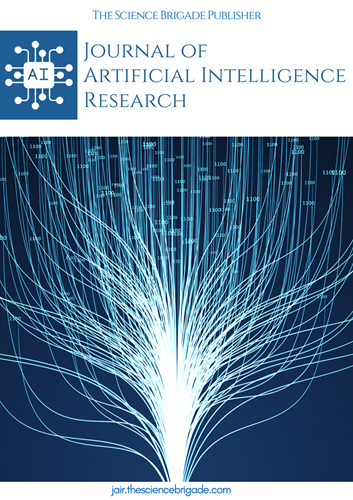Cloud-Native AI/ML Pipelines: Best Practices for Continuous Integration, Deployment, and Monitoring in Enterprise Applications
Keywords:
Cloud-native AI/ML pipelines, cloud platformsAbstract
The proliferation of artificial intelligence (AI) and machine learning (ML) technologies has revolutionized enterprise applications, enabling organizations to harness data-driven insights for decision-making, automation, and innovation. However, the successful deployment of AI/ML models in production environments requires robust infrastructure and methodologies to ensure continuous integration, deployment, and monitoring (CI/CD/CM) while maintaining model accuracy, scalability, and regulatory compliance. This research paper investigates the design and implementation of cloud-native AI/ML pipelines, emphasizing best practices for continuous integration, deployment, and monitoring in enterprise settings. Cloud-native paradigms, characterized by containerization, microservices, serverless computing, and Infrastructure as Code (IaC), offer scalable and flexible environments conducive to rapid development cycles and deployment agility. The research highlights the critical components and tools that constitute an end-to-end cloud-native AI/ML pipeline, such as version control systems, container orchestration platforms like Kubernetes, model serving frameworks, and continuous monitoring solutions. These components are integrated into CI/CD workflows to automate the stages of model training, validation, deployment, and post-deployment monitoring.
A comprehensive analysis of CI/CD tools and frameworks such as Jenkins, GitLab CI, Tekton, Kubeflow, MLflow, and Seldon is presented, elucidating their capabilities, integration strategies, and use cases in managing the lifecycle of AI/ML models. Additionally, the research delves into the challenges associated with orchestrating cloud-native AI/ML pipelines, including the complexities of model versioning, drift detection, data governance, and reproducibility. It emphasizes the importance of implementing ModelOps practices to streamline the production lifecycle and align with organizational goals, promoting collaboration between data science, DevOps, and IT operations teams. Furthermore, the study explores strategies for ensuring model interpretability, fairness, and compliance with industry-specific regulations such as GDPR and CCPA, which are crucial for deploying AI/ML models in highly regulated environments.
The paper also provides a comparative assessment of different cloud providers, including AWS, Google Cloud Platform (GCP), and Microsoft Azure, focusing on their AI/ML services and offerings that support CI/CD pipelines. This evaluation is aimed at guiding enterprises in selecting cloud platforms that align with their scalability, security, and compliance needs. The research further discusses the use of Infrastructure as Code (IaC) tools like Terraform and AWS CloudFormation for automating the provisioning of cloud resources, ensuring consistency across different environments, and minimizing configuration drifts. Emphasis is placed on the benefits of adopting a hybrid cloud strategy, where organizations leverage both public and private cloud environments to optimize costs, maintain control over sensitive data, and ensure robust disaster recovery mechanisms.
A significant portion of the research is dedicated to the operationalization of continuous monitoring (CM) for AI/ML models post-deployment. Monitoring is essential for detecting anomalies, data drift, and model decay, which can adversely affect model performance and reliability. The study examines monitoring frameworks such as Prometheus, Grafana, and AI-specific monitoring solutions like Arize AI and Fiddler, detailing how these tools can be integrated into cloud-native AI/ML pipelines to provide real-time insights and alerts. This integration facilitates proactive model management and maintenance, ensuring that models remain performant and aligned with business objectives over time.
Moreover, the paper addresses the need for scalability and robustness in cloud-native AI/ML pipelines by discussing architectural patterns such as blue-green deployments, canary releases, and shadow deployments. These patterns enable seamless updates and rollbacks, minimize downtime, and reduce the risk of deploying faulty models. The discussion extends to the use of feature stores and data versioning tools like Tecton and DVC (Data Version Control) to manage and serve features consistently across different stages of the AI/ML pipeline. The adoption of these best practices is crucial for organizations aiming to achieve a high level of automation, efficiency, and governance in their AI/ML initiatives.
Downloads
Downloads
Published
Issue
Section
License

This work is licensed under a Creative Commons Attribution-NonCommercial-ShareAlike 4.0 International License.
License Terms
Ownership and Licensing:
Authors of this research paper submitted to the journal owned and operated by The Science Brigade Group retain the copyright of their work while granting the journal certain rights. Authors maintain ownership of the copyright and have granted the journal a right of first publication. Simultaneously, authors agreed to license their research papers under the Creative Commons Attribution-NonCommercial-ShareAlike 4.0 International (CC BY-NC-SA 4.0) License.
License Permissions:
Under the CC BY-NC-SA 4.0 License, others are permitted to share and adapt the work, as long as proper attribution is given to the authors and acknowledgement is made of the initial publication in the Journal. This license allows for the broad dissemination and utilization of research papers.
Additional Distribution Arrangements:
Authors are free to enter into separate contractual arrangements for the non-exclusive distribution of the journal's published version of the work. This may include posting the work to institutional repositories, publishing it in journals or books, or other forms of dissemination. In such cases, authors are requested to acknowledge the initial publication of the work in this Journal.
Online Posting:
Authors are encouraged to share their work online, including in institutional repositories, disciplinary repositories, or on their personal websites. This permission applies both prior to and during the submission process to the Journal. Online sharing enhances the visibility and accessibility of the research papers.
Responsibility and Liability:
Authors are responsible for ensuring that their research papers do not infringe upon the copyright, privacy, or other rights of any third party. The Science Brigade Publishers disclaim any liability or responsibility for any copyright infringement or violation of third-party rights in the research papers.




